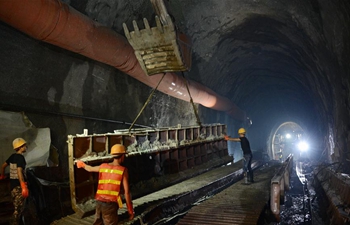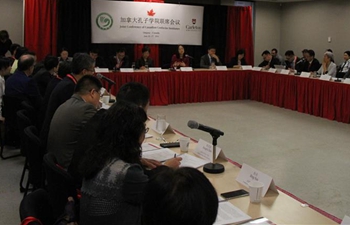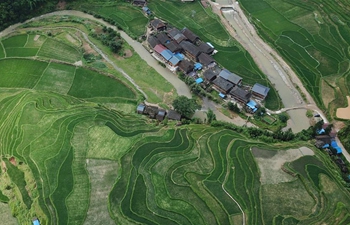CHICAGO, June 28 (Xinhua) -- Nanoscale knowledge of the relationships between water, friction and mineral chemistry could lead to a better understanding of earthquake dynamics, a study of the University of Illinois (UI) shows.
The study focuses on calcite-rich rocks in the presence of brine, naturally occurring salty groundwater, along fault surfaces. The rock surfaces that slide past each other along faults are not smooth. The researchers zoomed in on the naturally occurring tiny imperfections or unevenness on rocks' surfaces, called asperities, at which friction and wear originate when the two surfaces slide past each other.
For the experiments, the researchers submerged calcite crystals in brine solutions at various concentrations and subjected them to different pressures to simulate a natural fault setting. Once the crystals were in equilibrium with the solution, they used an atomic force microscope to drag a tiny arm with a silicon tip across the crystal to measure changes in friction.
In most of the experiments, the researchers first found what they expected: As the pressure applied on the crystals increased, it became more difficult to drag the tip across the crystal's surface. However, when they increased pressure to a certain point and the tip was moved slowly enough, the tip began to slide more easily across the crystal.
"This tells us that something has happened to this tiny asperity under higher pressures that caused a decrease in friction," said UI graduate student and co-author Yijue Diao.
"The atomic force microscope also allows us to image the crystal surface, and we can see that the groove increased in size, confirming that calcite had dissolved under pressure," Diao said, adding the dissolved mineral and water acted as a good lubricant, thereby causing the observed weakening of the single-asperity contact.
The researchers acknowledge that there are still many questions to address related to this research. However, their work demonstrates that certain brine-calcite interactions, under applied stress, induce dissolution and decrease the frictional strength at the single-asperity scale.
"Our research suggests that it might be possible to mitigate earthquake risk by purposely changing brine compositions in areas that contain calcite-rich rocks," said Rosa Espinosa-Marzal, a UI civil and environmental engineering professor and co-author of the study.
The study has been published in the journal Nature Communications.

















